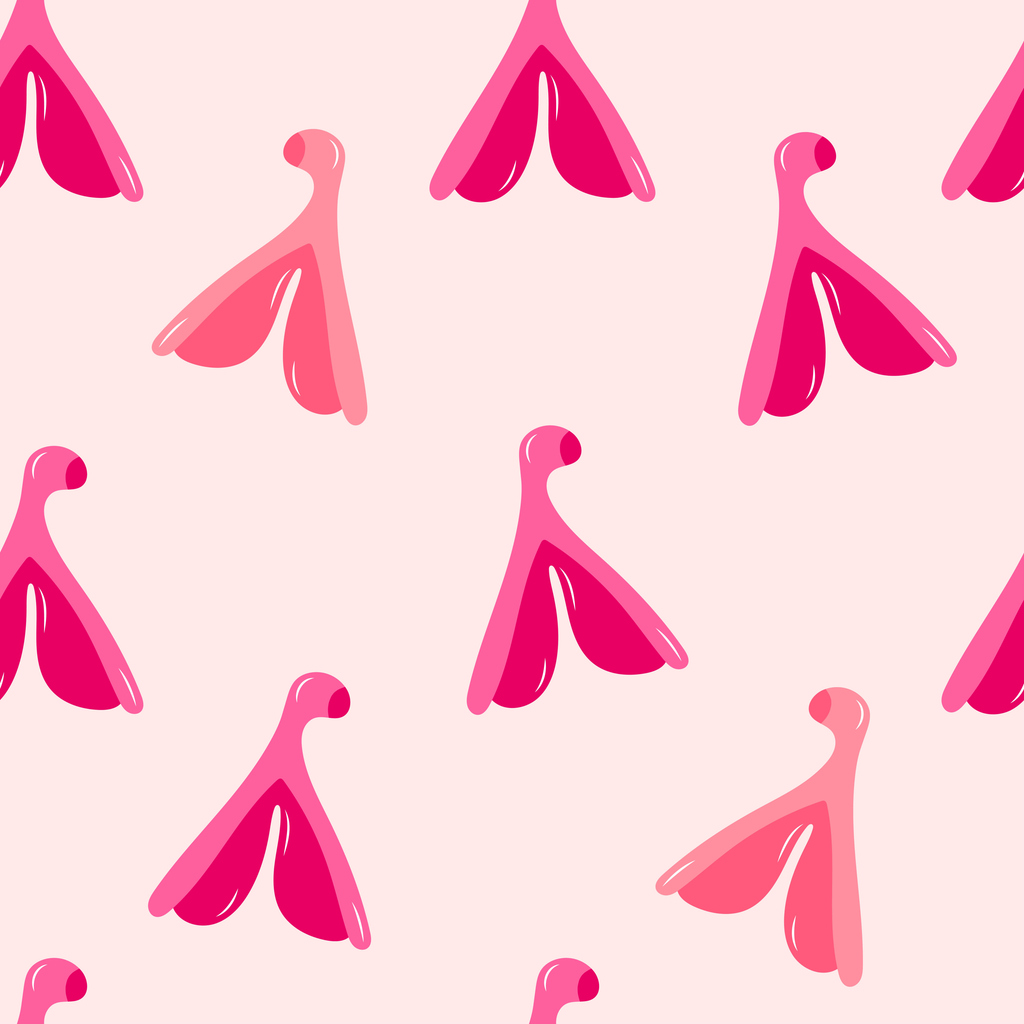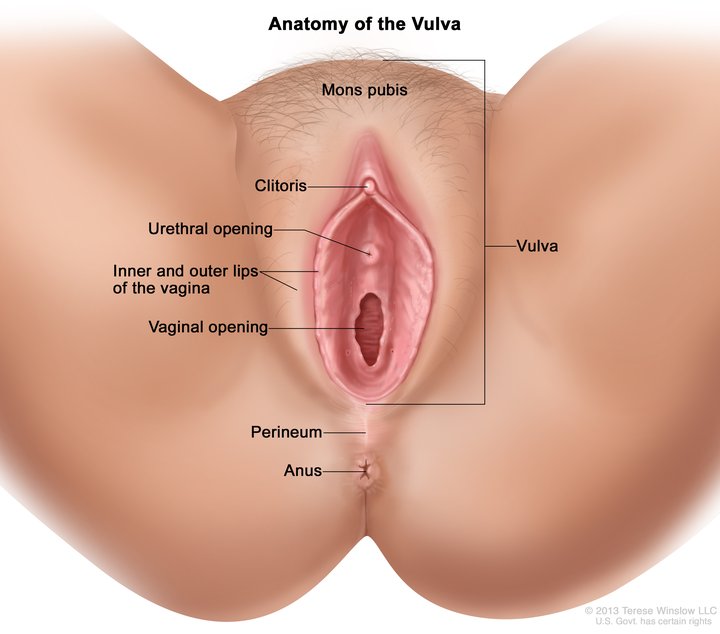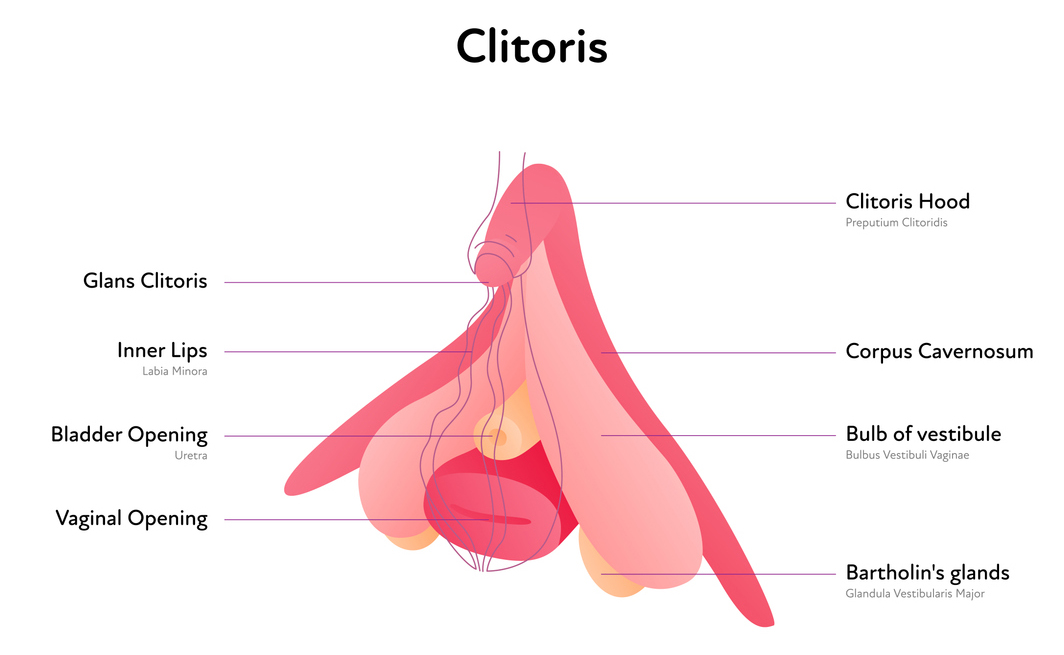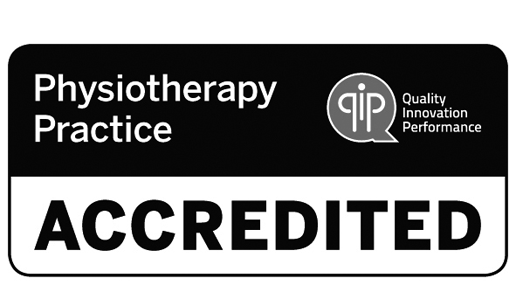
Curious About The Clitoris?
Every day, we speak with people who seek our support regarding painful sex. Often their stories include fear, confusion and a poor understanding of the vulva, clitoris and vagina. Many people hold unhelpful beliefs and perceptions of what is and isn’t normal.
As Pelvic Health Physiotherapists, part of our role is to educate, enlighten and empower individuals to develop a healthier perspective about their genitals and guide them toward safe, comfortable and pleasurable experiences with their body. Here we explore relatively recent discoveries regarding the clitoris and the relevance to those we see with pelvic health concerns.
Sex Should Never Be Painful
Sexual behaviour refers to physical and psychological actions that involve sexual arousal, desire and satisfaction. Sexual activity is how we experience and express sexuality and includes a range of activities, from acts done alone to those with another person. Sexual activity is a fundamental aspect of human nature and is crucial in personal relationships, procreation, and individual well-being. Sex matters, it should never be painful, and in fact, it should be enjoyable and pleasurable. Unfortunately, 1 in 5 people assigned female at birth experience painful sex with many sufferers believing it is normal, it is their fault, that they weren’t aroused enough, or that there is nothing that can be done to help. This couldn’t be further from the truth!
Understanding Anatomy Helps
Society has perpetuated unhelpful myths about the names of our genitals, how they should look and what they do. This misinformation has led to confusion, worry and fear about what is normal. For many people, these negative thoughts and beliefs can contribute to painful sex. Having an accurate understanding of the female genitalia creates a safe, healthy and realistic connection between the mind and the body.
Correct Terminology for Female Genitalia
- The vulva is the name for the external parts of female genitals. Just like other parts of the body, the
 vulva comes in many different shapes, sizes and colours.
vulva comes in many different shapes, sizes and colours. - The labia majora (outer labia) are folds of skin that run from the pubic bone and pubic hair area (mons pubis) towards the anus.
- The labia minora (inner labia) are an inner fold of skin that sit just inside the labia majora. Many people call the labia flaps or lips. They provide a level of protection to the vagina and also become engorged with blood flow when aroused.
- Externally the clitoris sits at the top of the labia minora, underneath what is called the clitoral hood, and internally it extends downwards.
- The urethra sits just underneath the clitoris and is the tube that connects to the bladder, and is where urine passes through.
- The vagina is an elastic, muscular tube that connects from the outside of the body to the cervix (the entrance to the uterus). The vagina acts as the passage for blood flow during menstruation, for sexual intercourse and for childbirth.
- The perineum is the area of skin between the vagina and the anus.
- The anus is the opening from the bowel, where faeces pass through.
Every Vulva Is Unique
Vulva’s are as different as faces! Whilst the parts that make up the vulva are the same, they can look very different from one person to the next. It is common and normal for labia minora to be larger than labia majora, or for one side to be a different size to the other. The colour of the skin can vary greatly too. Images that appear in magazines or pornography are often airbrushed or photoshopped (just like the one above!), giving a completely inaccurate representation of the variation that exists.
To bust myths around female genitalia, Women’s Health Victoria has produced a wonderful online resource called The Labia Library, highlighting the variation and diversity in appearance that exists. If you are concerned about the appearance of your genitalia or if you think it has changed, talk to your GP or Gynaecologist who can offer you more individualised advice.
Get Curious About The Vulva & Clitoris

We encourage people to be curious about their own anatomy, to explore, with an open mind and lack of judgment, what it looks like and what it feels like to touch. Many people are surprised to learn that the vagina is only a part of the vulva, meaning that vagina and vulva are not the same thing.
It is also extremely common for people to be unsure about exactly where the clitoris is. It is incredulous that it took until 2005 for the anatomy of the clitoris to be mapped and described by revolutionary Melbourne based Urologist (and regular referrer to WMHP), Professor Helen O’Connell.
Using MRI scans, Professor O’Connell found that it is the tip (or glans) of the clitoris that is visible and palpable (ie can be touched) and the remaining 90% of theclitoris is internal extending downwards, either side of the vagina. The part that can be seen is literally the tip of the iceberg! The clitoris has thousands of nerve endings, with the glans being the most sensitive spot for most people.
The clitoris is the only human organ that exists purely for pleasure. Getting familiar with the clitoris and exploring what feels comfortable and pleasurable can be a helpful step in the right direction to changing experiences of pain.
Professor O’Connell and a group of other like-minded health professionals formed an alliance they named the ‘International Cliteratti’. To learn more, watch their recent ABC news interview.
Pain Is A Passion Killer
Sexual desire or libido is having an interest (thoughts, feelings or fantasies) in engaging in sexual activity. While desire refers to your baseline interest in sex, arousal refers to your physical and emotional response to sexual stimuli, being turned on.
Sexual desire and arousal are a product of hormones, thoughts, emotions and the interaction of everything happening in a persons’ life at that time. It is normal to have a fluctuating level of desire and arousal, it is complex and influenced by many factors. Pain is one of those factors. But likewise, reduced arousal can cause pain so addressing desire and arousal, alongside other factors, is necessary for comfortable and pleasurable sex.
Becoming “Cliterate”
Sex and pleasure go together. Getting to know and understand your body and what turns you on will reduce sexual pain and increase pleasure. Recently termed being “cliterate”, we encourage anyone who owns a clitoris or cares about someone who does- to become curious about the clitoris, an incredible organ that is purely for pleasure! If pain gets in the way of you experiencing pleasurable intimacy or sex, please seek help – you know where to find us!




